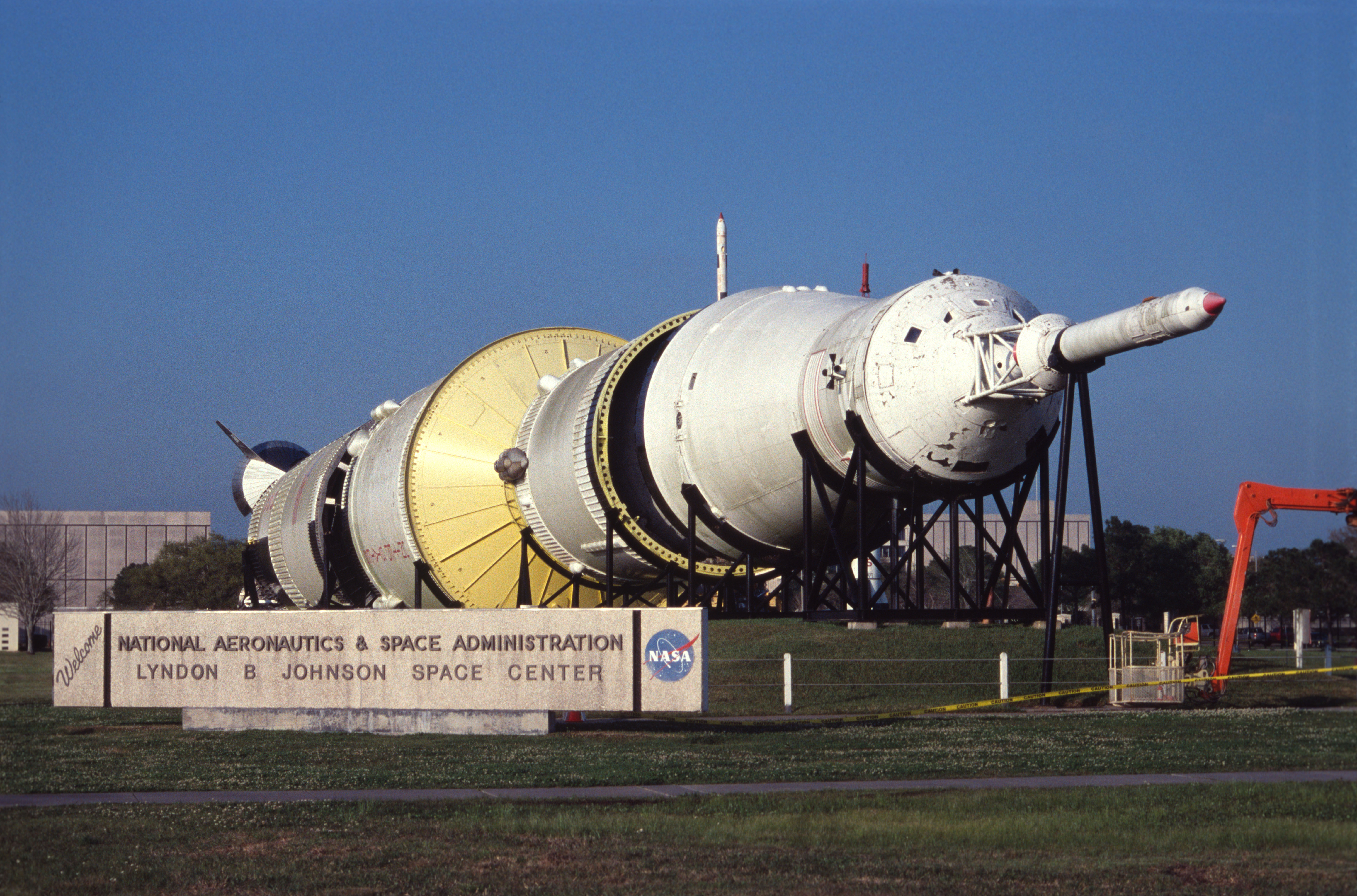Saturn V, sometimes written Saturn 5, was the rocket that launched American astronauts to the moon. Thirteen Saturn V rockets were launched between 1967 and 1973. It remains one of the largest, most powerful rockets ever flown successfully.

The Saturn V measured 363 feet (111 meters) in height, taller than a 30-story building. It weighed 6.2 million pounds (2.8 million kilograms). The rocket used three stages to propel the Apollo spacecraft to the moon. The first stage burned kerosene and liquid oxygen and produced nearly 7.7 million pounds (34 million newtons) of thrust at launch. It lifted the rocket and its payload to an Earth orbit about 40 miles (64 kilometers) above the surface. The second and third stages burned liquid hydrogen and liquid oxygen, propelling the Apollo craft on a course to arrive at the moon.
In 1957, the U.S. Army proposed a large rocket for space exploration and the delivery of nuclear warheads. The rocket, named Juno-V, was designed by the German-born American rocket engineer Wernher von Braun. In 1959, the name of the rocket was changed to Saturn. The Army’s previous series of rockets was named Jupiter, so officials reasoned that the next rocket should be named after Saturn, the next planet in order of distance from the sun.
In 1959, control of the Saturn program was transferred from the U.S. Army to the National Aeronautics and Space Administration (NASA). NASA quickly expanded the concept, proposing three series of launchers to develop rocketry technology. But only rockets of the final series—series C—were developed. NASA developed several versions of the Saturn C rocket, but only three versions were built. The Saturn C-1 and Saturn C-1B (later written IB) were used in testing missions for the Apollo program. The most powerful of the three Saturn rockets was the Saturn C-5, which was eventually called the Saturn V.
Full-scale production of Saturn V rockets began in 1962. Fifteen were built before production was halted in 1968. The Saturn V was last used in 1973 to launch the first U.S. space station, called Skylab, into Earth orbit. The Saturn IB was last used in 1975 to launch the U.S. portion of the Apollo-Soyuz Test Project. The Saturn V remained the most powerful rocket ever launched successfully until 2022, when NASA first launched the more powerful Space Launch System (SLS).
Parts of the two unused Saturn V rockets, along with other backup stages, are on display across the United States. Complete assemblies can be found at the Kennedy Space Center in Florida and the Johnson Space Center in Texas. 
